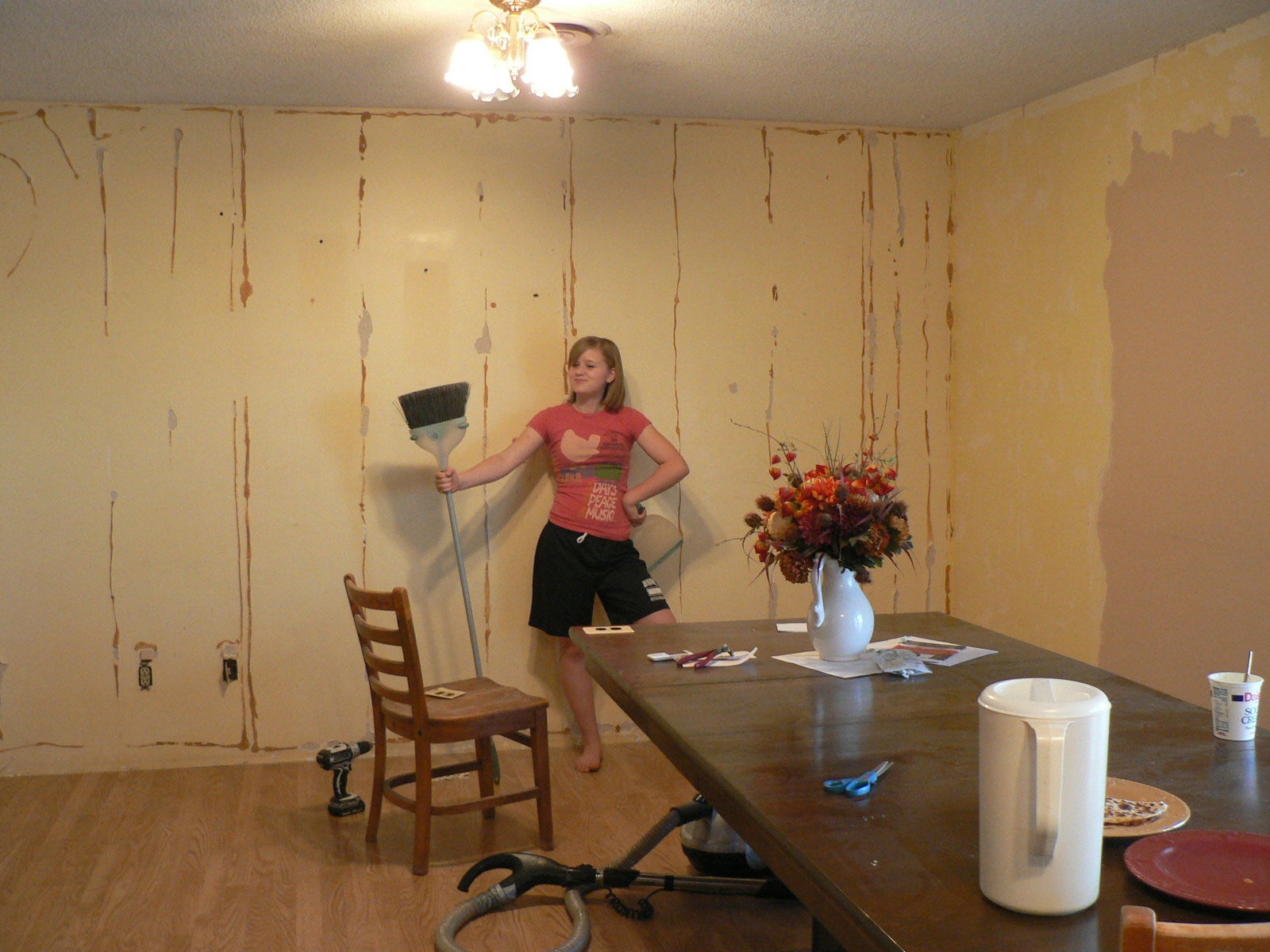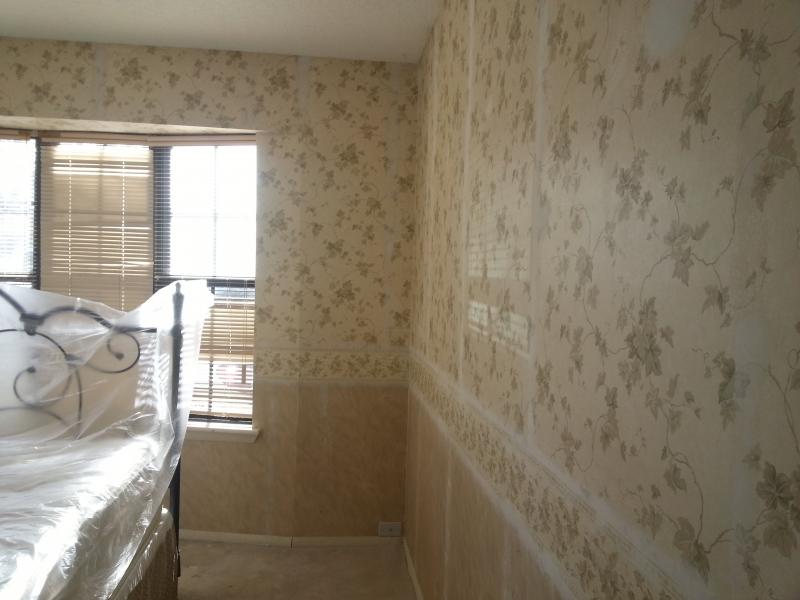Preparing the Bathroom for Painting: Painting Over Wallpaper In Bathroom

Painting over wallpaper in a bathroom requires thorough preparation to ensure a smooth and long-lasting finish. This involves removing loose wallpaper, cleaning the surface, and creating a suitable base for paint adhesion.
Removing Loose Wallpaper
Removing loose wallpaper is crucial for achieving a clean and even surface for painting. This step helps prevent peeling or bubbling of the paint in the future.
- Start by gently scoring the wallpaper with a utility knife or scoring tool. This helps loosen the adhesive and makes it easier to remove.
- Use a wallpaper steamer to soften the adhesive. The steam penetrates the wallpaper, making it easier to peel off. For small areas, a damp cloth can be used instead.
- Carefully peel off the wallpaper, starting from a corner or edge. If the wallpaper is stubborn, use a putty knife or scraper to loosen it further.
- Once the wallpaper is removed, clean the surface thoroughly with a damp cloth to remove any remaining adhesive or residue.
Preparing the Surface for Painting
After removing the wallpaper, it’s essential to prepare the surface for painting. This involves filling any holes or cracks, sanding the surface smooth, and cleaning it thoroughly.
- Use a patching compound or spackle to fill any holes or cracks in the wall. Allow the patching compound to dry completely before sanding.
- Sand the surface smooth using fine-grit sandpaper. This creates a uniform texture that will allow the paint to adhere evenly.
- Clean the surface thoroughly with a damp cloth to remove any dust or debris. This ensures a clean and dust-free surface for painting.
Essential Tools and Materials
Having the right tools and materials on hand makes the preparation process more efficient and effective.
- Utility knife or scoring tool
- Wallpaper steamer
- Putty knife or scraper
- Patching compound or spackle
- Fine-grit sandpaper
- Damp cloths
- Paint primer
- Paintbrush or roller
- Paint tray
- Drop cloths
- Safety glasses and gloves
Ventilation and Drying Time
Proper ventilation is crucial during the preparation process, especially when using a wallpaper steamer or applying patching compound.
- Open windows and doors to allow fresh air to circulate. This helps remove any fumes or odors generated during the preparation process.
- Ensure adequate drying time for patching compound and primer. Following the manufacturer’s instructions for drying times is essential for achieving a smooth and durable finish.
Choosing the Right Paint for Bathroom Wallpaper

Painting over wallpaper in a bathroom requires careful consideration of the paint type to ensure durability and prevent moisture-related issues. Bathroom environments are prone to humidity and condensation, making it crucial to select a paint that can withstand these conditions.
Types of Bathroom Paint, Painting over wallpaper in bathroom
Choosing the right paint is essential for a long-lasting and attractive finish. Here’s a comparison of different types of bathroom paint:
| Paint Type | Characteristics | Suitability for Wallpaper |
|---|---|---|
| Acrylic Latex Paint | Water-based, dries quickly, low VOCs, good adhesion, washable | Excellent choice for most wallpaper types, offering good adhesion and durability |
| Oil-Based Paint | Solvent-based, durable, long-lasting, provides a hard finish | Suitable for wallpaper, but may require special primers due to its slower drying time |
| Epoxy Paint | Highly durable, moisture-resistant, resistant to chemicals and stains | Best for high-moisture areas like showers and tubs, providing a protective barrier |
| Moisture-Resistant Paint | Formulated to resist water damage, often contains mildewcide | Excellent choice for bathrooms, as it prevents moisture penetration and mildew growth |
Moisture-Resistant and Mildew-Resistant Paints
Moisture-resistant paint is formulated to resist water penetration and prevent damage from humidity and condensation. It typically contains additives that create a barrier against moisture, reducing the risk of peeling, cracking, and mold growth. Mildew-resistant paint, on the other hand, includes mildewcide, an agent that inhibits the growth of mold and mildew. This type of paint is particularly beneficial in humid environments like bathrooms, where mildew is a common concern.
Using a Primer
Applying a primer before painting over wallpaper is highly recommended, especially in bathrooms. A primer helps to:
- Create a smooth surface for the paint to adhere to, improving adhesion and preventing peeling.
- Seal the wallpaper, preventing moisture from penetrating and causing damage.
- Block stains and odors, ensuring a clean and fresh finish.
- Provide a uniform base for the paint, allowing for a more even color application.
Choosing the Right Paint Color and Finish
The choice of paint color and finish depends on personal preference and the desired aesthetic. Lighter colors reflect light, making the bathroom appear larger and brighter. Darker colors can create a more intimate and cozy atmosphere. Consider the overall design scheme and the size of the bathroom when choosing a color.
- Flat Finish: Provides a matte finish, hiding imperfections but not as washable.
- Eggshell Finish: Offers a slightly sheen finish, providing a balance between durability and a soft look.
- Satin Finish: Offers a smooth, low-sheen finish, providing good durability and washability.
- Semi-Gloss Finish: Provides a higher sheen, enhancing durability and washability, ideal for high-traffic areas.
Painting over wallpaper in bathroom – Painting over wallpaper in your bathroom can be a quick and affordable way to refresh the space, but if you’re looking for a more dramatic transformation, a full small bathroom remodel in San Francisco might be the better option. A remodel allows you to address underlying issues like outdated plumbing or inefficient layouts, and ultimately create a bathroom that perfectly reflects your style and needs.
Painting over wallpaper in a bathroom can be a great way to refresh the space without a complete overhaul. However, if you’re dealing with a small bathroom, maximizing space is key. Consider incorporating a narrow bathroom vanity to create a more streamlined look.
Once the vanity is in place, a fresh coat of paint on the walls can complete the transformation, making your bathroom feel larger and more inviting.